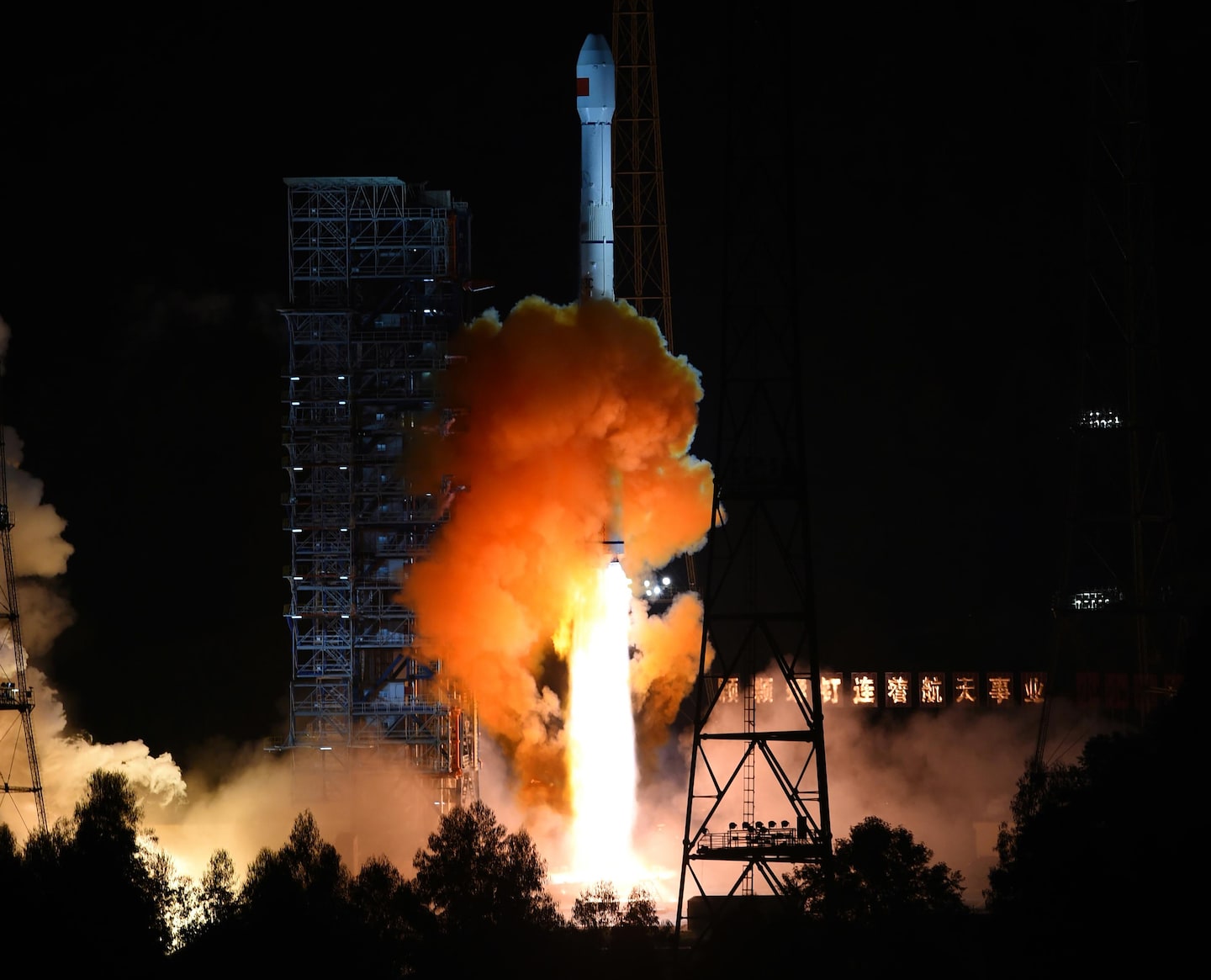The rocket that will crash into the moon is probably from China, not SpaceX, NASA says

“Analysis led by NASA’s Jet Propulsion Laboratory’s Center for Near-Earth Object Studies indicates the object expected to impact the far side of the Moon March 4 is likely the Chinese Chang’e 5-T1 booster launched in 2014,” a spokesperson said in a statement. “It is not a SpaceX Falcon 9 second stage from a mission in 2015 as previously reported.”
Neither officials with SpaceX nor the Chinese Lunar Exploration Program immediately returned requests for comment Wednesday.
Bill Gray, an independent researcher in orbital dynamics, shared findings in late January indicating that a derelict SpaceX Falcon 9 booster launched in 2015 would crash into the moon in early March. His findings were confirmed by several prominent astronomers. The Washington Post was among the outlets that reported on his findings.
But recently, Gray said he received information from a NASA engineer that prompted him to reevaluate that conclusion.
“The object had about the brightness we would expect, and had showed up at the expected time and moving in a reasonable orbit,” Gray wrote in a blog post.
Gray told The Post that given the rocket’s orbit, he “should have noticed some odd things” about the space junk he believed belonged to SpaceX.
“I just groaned,” he said. “I thought I had really messed this up.”
The Chinese booster’s expected collision with the moon has shined a light on issues surrounding space junk floating in deep space. It has also raised questions surrounding who tracks space junk and what more can be done so that people and agencies know what exactly is floating outside Earth. Jonathan McDowell, an astronomer at the Harvard Smithsonian Center for Astrophysics, previously told The Post that “we need to have more attention paid to the junk that we’re leaving out there.”
“This (an honest mistake) just emphasizes the problem with lack of proper tracking of these deep space objects,” McDowell tweeted.
Gray had been tracking the Falcon 9 booster on the Project Pluto computer software he developed when it appeared to show up in readings last March. Launched in February 2015, the Falcon 9 traveled 1 million miles — a distance nearly four times farther than the moon — to help the National Oceanic and Atmospheric Administration’s Deep Space Climate Observatory (DSCOVER) start its journey to Lagrange Point 2, a gravitationally stable solar orbit on the opposite side of the sun from our planet.
Gray, who has tracked space junk, asteroids and objects near Earth for about 25 years, and other space observers agreed last month that the SpaceX rocket was set to crash into the far side of the moon — an event that, regardless of the rocket’s name, Gray believes could be “the first unintentional case” of space junk hitting the moon. The crash is expected to create a new crater, but it will not significantly damage the moon, Gray said.
While some astronomers said the initial news was interesting but not a game changer, the assertion that a SpaceX rocket was on a collision course for the moon made worldwide headlines in January.
Weeks later, Gray said an email from Jon Giorgini, an engineer at NASA’s Jet Propulsion Laboratory in California, led him to reexamine what exactly was going to crash into the moon.
“My main interest is in knowing that there’s junk out there, so I must concede I did not dig into it quite as deeply as I might have,” said Gray, 57.
After a user on Giorgini’s Horizons database, which generates locations and orbits for about 1.2 million objects in the solar system, asked the engineer how certain he was that the object was from SpaceX, the NASA engineer looked at it again. Further study indicated that the lunar-bound space junk didn’t share a similar trajectory to DSCOVR, suggesting that it was a different rocket entirely.
Giorgini shared his findings with his friend, Gray. Almost immediately, Gray noticed a couple of issues with his initial theory, specifically how the trajectory of the rocket and its lunar flyby were different than his what the original projections showed.
He didn’t have to go back too far before the SpaceX launch to figure out the source of the rocket. On Oct. 23, 2014, a Long March 3C rocket launched China’s Chang’e-5 T1 spacecraft, which went around the moon before returning to Earth. The launch of the spacecraft, which dropped off a small return capsule that ended up in Mongolia, was a precursor to the successful Chang’e-5 mission in 2020 that saw the space agency bring back moon rocks and dust to be studied on Earth.
The Chinese rocket is still expected to hit the moon on March 4, Gray said. It’s unclear where the second stage of the SpaceX rocket is in deep space.
Gray said he has not heard from anyone at SpaceX, but would apologize to them “for any grief they caught over this.” He hopes the recent attention paid to space junk will encourage more awareness around what’s floating in deep space.
“I cannot blame SpaceX or China for doing what everyone else has done for decades in simply ignoring the problem,” he said. “I would also say to them that if they would care to let me know where their stuff is going in the first place, we can avoid this sort of mix-up.”
He acknowledged his frustration in not correctly identifying the object, but that has not dampened his excitement in a fresh lunar crater caused by an object whose properties researchers understand and can learn from.
“I’m annoyed that I didn’t get it right, but I’m still very interested in how this all turns out,” Gray said.
Read more:






